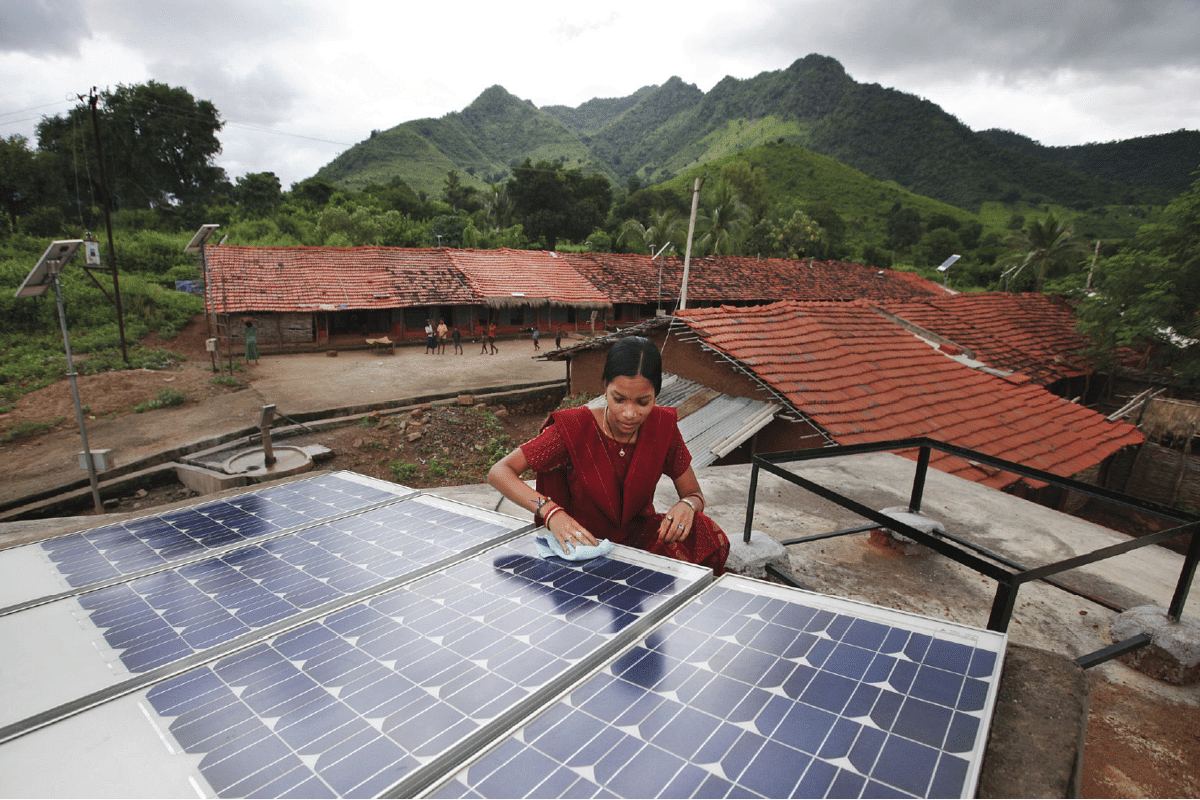Infrastructure
Explained: Suryodaya Yojana — What, Why And How Of The Rooftop Solar Power Scheme For Ten Million Homes

Every household endowed with a roof can harness the power of the sun, reducing electricity expenses. (Image: Abbie Trayler Smith/ClimateVisuals)
Shortly after the consecration of the Ram idol in Ayodhya, Prime Minister Narendra Modi announced the Pradhanmantri Suryodaya Yojana on Monday, 22 January. This scheme entails the installation of solar panels on the rooftops of one crore households.
PM Modi's recent announcement is the second such initiative aimed at promoting the widespread adoption of rooftop solar systems nationwide.
Since 2015, the government has been driving the expansion of rooftop solar (RTS) system in the residential sector by providing Central Financial Assistance.
The second phase of the scheme, unveiled in 2019, aims to achieve an aggregate capacity of 40 GW in rooftop solar by 2026, and includes 4 GW for the residential sector.
As of November 2023, India's cumulative rooftop solar capacity has reached 10.49 GW, yet residential rooftops contribute only 21 per cent to the total installed capacity, according to a report by the Council for Energy, Environment, and Water (CEEW), a Delhi-based think tank.
The recent announcement by PM Modi aims to rectify this imbalance, accelerating the adoption of rooftop solar systems among residential units, while concurrently striving to reach a target of 40 GW rooftop solar capacity.
Beyond fostering balance, the new scheme will also help reduce electricity bills for the poor and middle class, while advancing India's goal of achieving self-reliance in the energy sector.
Into Spotlight
An intriguing question arises: Why has there been a subdued embrace of rooftop solar systems in Indian households, despite the subsidies provided by the Ministry of New and Renewable Energy (MNRE)?
The reluctance to adopt household solar systems is due to several deterrents, both on the demand and supply sides.
Prominent factors include a notable awareness gap, affordability and access to finance, and the high cost associated with consumer servicing, among other considerations.
While the RTS scheme offers a subsidy to systems exceeding 1 kW in size within the residential sector, it also limits access to low-cost solar for a significant fraction of households falling within lower consumption brackets.
Securing affordable financing poses a hurdle, even for systems surpassing 1 kW in size. Financing is needed to pay for the remaining system cost, which is still significant for these consumers, even with central and state subsidies.
Similarly, there is a lack of awareness among residential consumers about potential benefits. According to the CEEW report, national awareness levels among residential consumers were less than 50 per cent in the fiscal year 2020.
One crore households is a big number to achieve!
Nevertheless, the massive deployment of household solar systems holds the promise of not just facilitating a shift towards clean energy but also addressing a fundamental necessity — access to power.
The new scheme is the first step in that direction. However, the measure of its effectiveness will be discerningly assessed as time unfolds.
Support Swarajya's 50 Ground Reports Project & Sponsor A Story
Every general election Swarajya does a 50 ground reports project.
Aimed only at serious readers and those who appreciate the nuances of political undercurrents, the project provides a sense of India's electoral landscape. As you know, these reports are produced after considerable investment of travel, time and effort on the ground.
This time too we've kicked off the project in style and have covered over 30 constituencies already. If you're someone who appreciates such work and have enjoyed our coverage please consider sponsoring a ground report for just Rs 2999 to Rs 19,999 - it goes a long way in helping us produce more quality reportage.
You can also back this project by becoming a subscriber for as little as Rs 999 - so do click on this links and choose a plan that suits you and back us.
Click below to contribute.
Latest